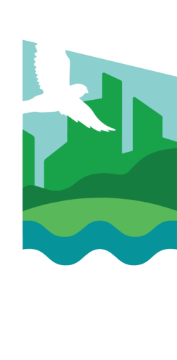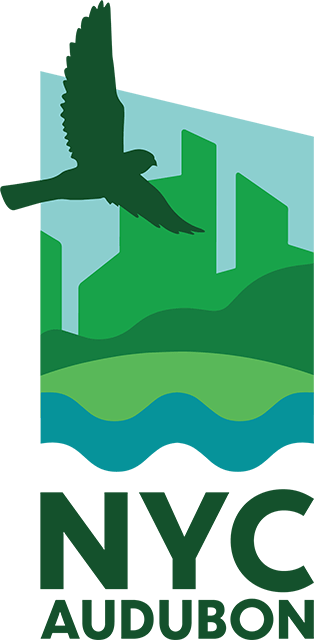Volunteers are the lifeblood of NYC Audubon, essential to carrying out our mission of protecting the birds and habitats of New York City. Whether you are an experienced birder looking to help with bird surveys, or have little-to-no experience and are just passionate about the environment, there are many ways to get involved in the field with NYC Audubon.
Upcoming Volunteer Opportunities
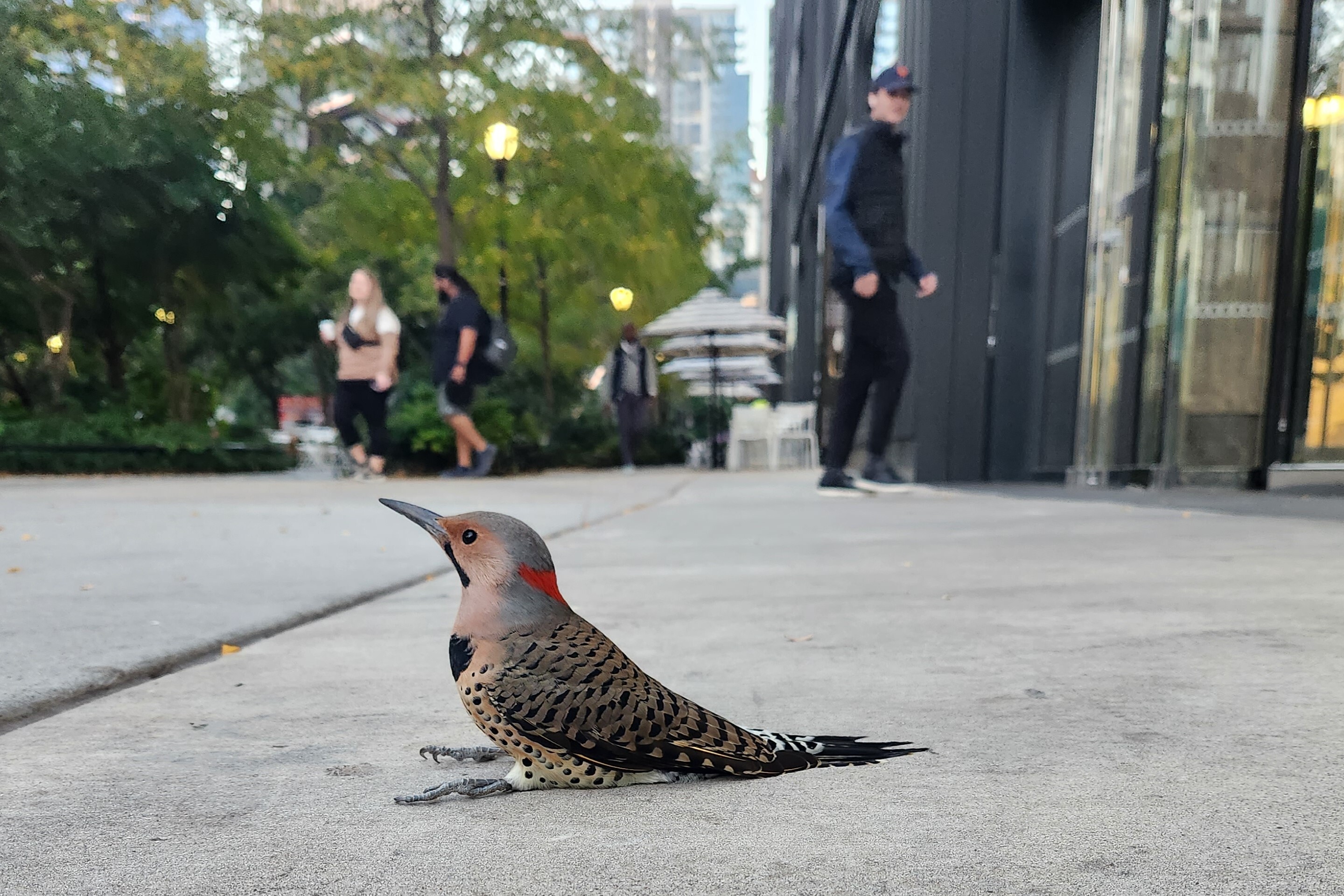
A Northern Flicker sits stunned after colliding with glass. Photo: NYC Audubon
Injured Bird Response Team
New Yorkers find injured and baby birds year-round but are unsure of how to help. Injured Bird Response Team volunteers answer injured bird inquiries sent to NYC Audubon via phone or email, and -- if needed -- put out alerts to our Injured Bird Transport Team to take the bird to a rehabilitation center. This is a completely remote, year-round position.
If interested, please email Senior Manager of Community Science & Collision Reduction Katherine Chen at kchen@nycaudubon.org for more information on how to get involved.
If interested, please email Senior Manager of Community Science & Collision Reduction Katherine Chen at kchen@nycaudubon.org for more information on how to get involved.
American Woodcock, a common collision victim that needs transporting to an animal rehabilitator. Photo: NYC Audubon
Injured Bird Transport Team
Oftentimes, people find an injured bird in need of treatment but are unable to bring it to a rehabilitation center themselves. Injured Bird Transporters are needed to travel to locations throughout the City and carry injured or orphaned birds to the Wild Bird Fund or another rehabilitation center. Transporters can determine, based on their schedule and location, whether to answer a request sent to the Injured Bird Transporters team. This is a year-round volunteer opportunity. The time commitment varies and is dependent on the transporter’s own location and the pickup location for the bird.
If interested, please email Senior Manager of Community Science & Collision Reduction Katherine Chen at kchen@nycaudubon.org for more information on how to get involved.
If interested, please email Senior Manager of Community Science & Collision Reduction Katherine Chen at kchen@nycaudubon.org for more information on how to get involved.
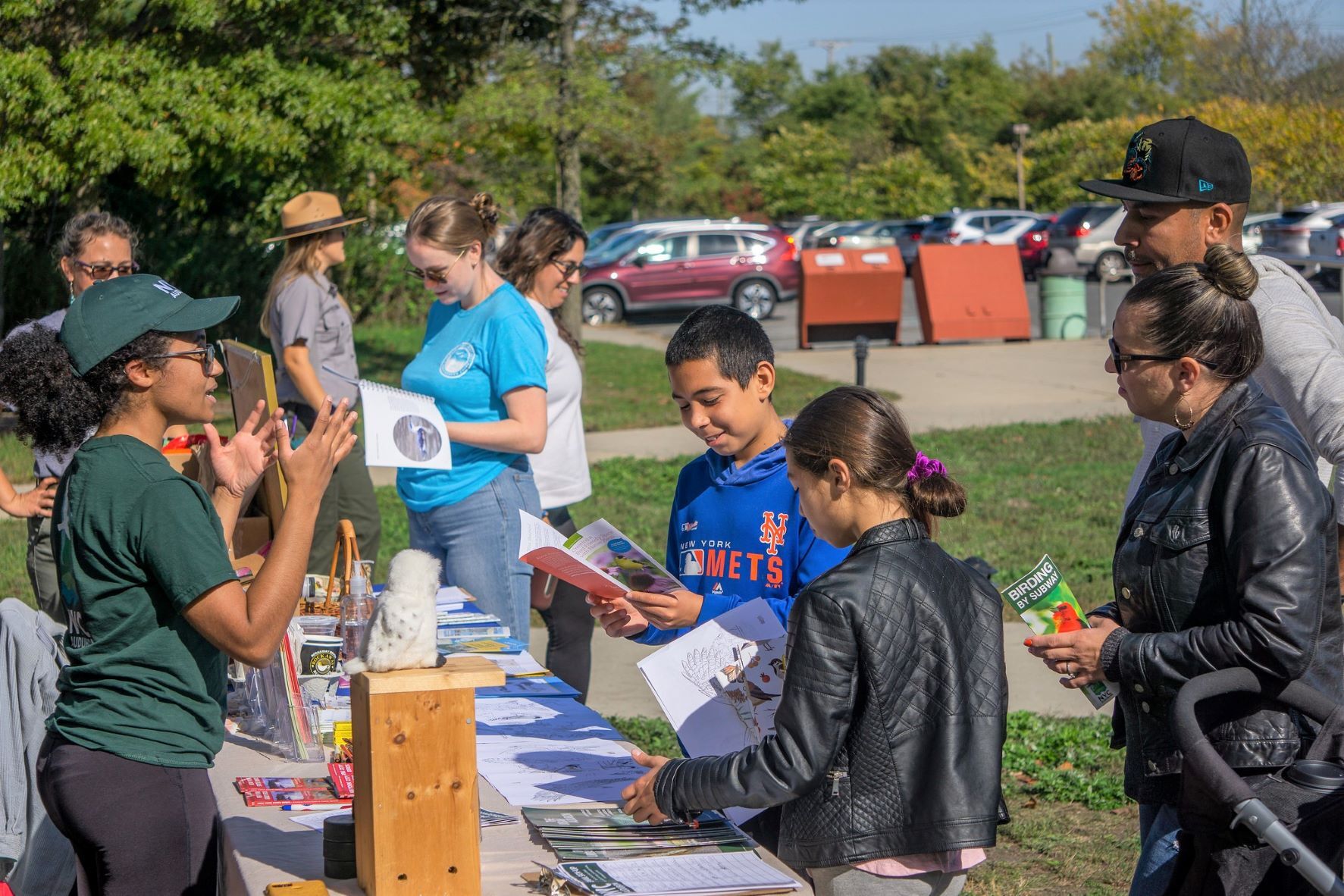
Public Programs Manager Roslyn Rivas educates festival goers about birds at our Raptorama! program at Jamaica Bay. Photo: NYC Audubon
Public Festivals
Public Festival volunteers engage the public at NYC Audubon festivals, primarily held on Saturdays and Sundays across New York City. Volunteers should be able to communicate comfortably with festival participants about conservation and wild birds. Contact Public Programs Manager Roslyn Rivas at rrivas@nycaudubon.org with any questions.
Interested in volunteering? Please fill out our quick and easy form to indicate your availability and we will be in touch when opportunities arise!
Interested in volunteering? Please fill out our quick and easy form to indicate your availability and we will be in touch when opportunities arise!

Visitors to Governors Island don self-created bird masks as part of Halloween festivities at the NYC Audubon house at Nolan Park. Photo: NYC Audubon
Governors Island Seasonal Environmental Center
Governors Island volunteers engage the public at NYC Audubon's seasonal environmental center on Governors Island, as well as support NYC Audubon's Governors Island Artist in Residence (AiR) program. Volunteers are needed during our open season from May-October, Saturdays-Sundays. Volunteers should be able to communicate comfortably with Island visitors about NYC birds and conservation. Before applying, please read more about our Governors Island programs. Contact Advocacy and Engagement Associate Jesse McLaughlin at jmclaughlin@nycaudubon.org with any questions.
Interested in volunteering? Please fill out our quick and easy form to indicate your availability and we will be in touch when opportunities arise!
Interested in volunteering? Please fill out our quick and easy form to indicate your availability and we will be in touch when opportunities arise!
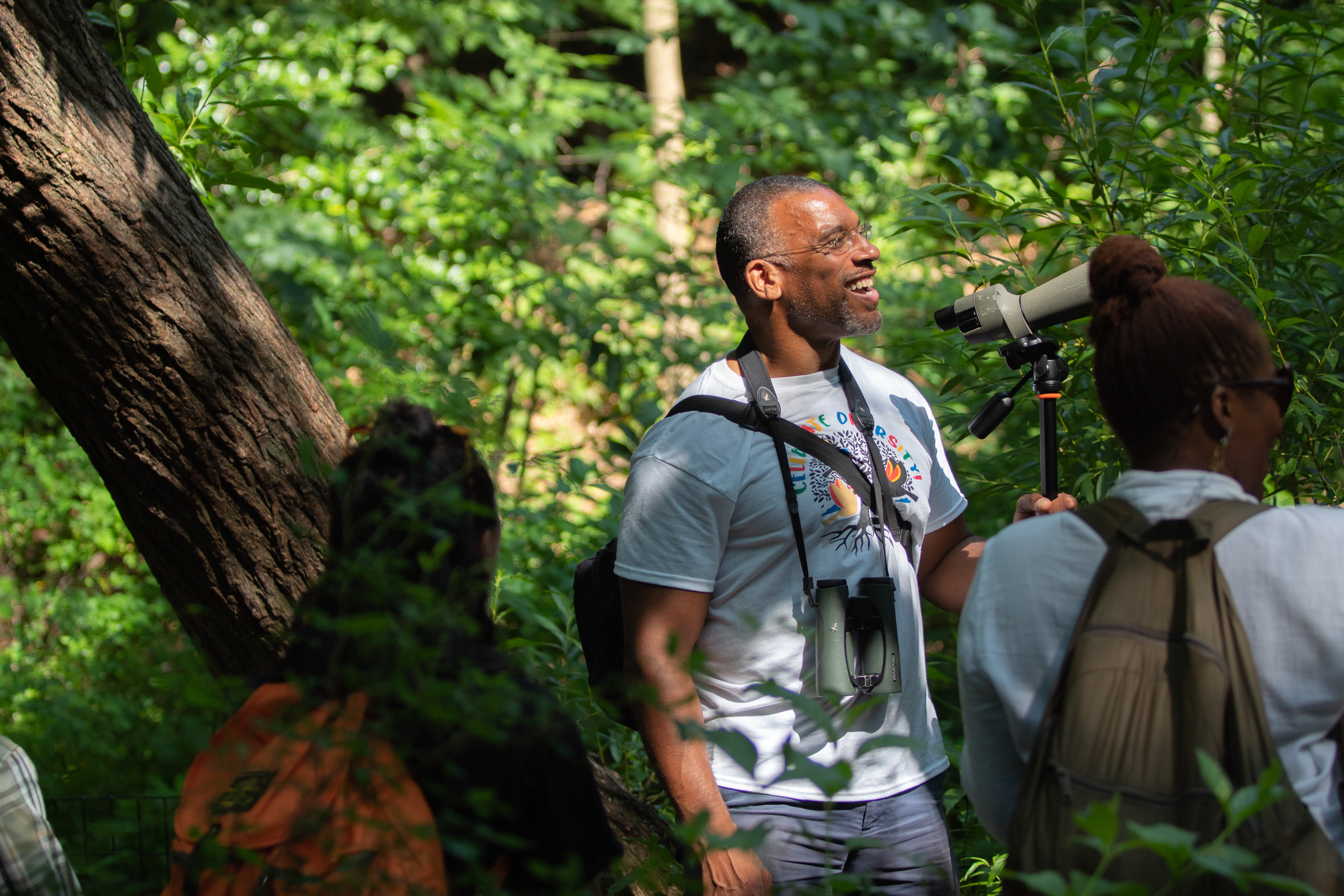
NYC Audubon board member Christian Cooper leads fourth and fifth graders from AmPark Neighborhood School on a bird outing in Van Cortlandt Park. Photo: NYC Audubon
Feathered Friends
Feathered Friends is an afterschool program created by NYC Audubon board member Christian Cooper. Together with AmPark Neighborhood School in the Bronx, NYC Audubon volunteers take 4th and 5th grade students to Van Cortlandt Park for weekly hour-long bird outings. The kids get to enjoy time outside and learn about the natural world! Volunteers will meet at AmPark Neighborhood School one day a week from May to the first week of June.
If you would like to volunteer in spring 2024, please contact Michele Gennaoui at mgenn@att.net.
If you would like to volunteer in spring 2024, please contact Michele Gennaoui at mgenn@att.net.
Volunteers preparing to tag a male Atlantic Horseshoe Crab. Photo: Bianco Otero
CLOSED: Horseshoe Crab Monitoring
Horseshoe crab monitoring is a fun and easy volunteer activity, and an important way to contribute to scientific research and bird protection. Volunteers gather on beaches in Jamaica Bay in Queens or Brooklyn on 12 nights in May and June to count, measure, and tag Atlantic horseshoe crabs, the eggs of which are a critical food source for migrating shorebirds like the Red Knot.
Signups for 2024 are now closed. If you have registered to participate as a horseshoe crab monitor, click the button below for details about what to bring, NYC Audubon's monitoring sites, and the monitoring dates.
For questions, contact Senior Manager of Community Science & Collision Reduction Katherine Chen at kchen@nycaudubon.org.
Signups for 2024 are now closed. If you have registered to participate as a horseshoe crab monitor, click the button below for details about what to bring, NYC Audubon's monitoring sites, and the monitoring dates.
For questions, contact Senior Manager of Community Science & Collision Reduction Katherine Chen at kchen@nycaudubon.org.
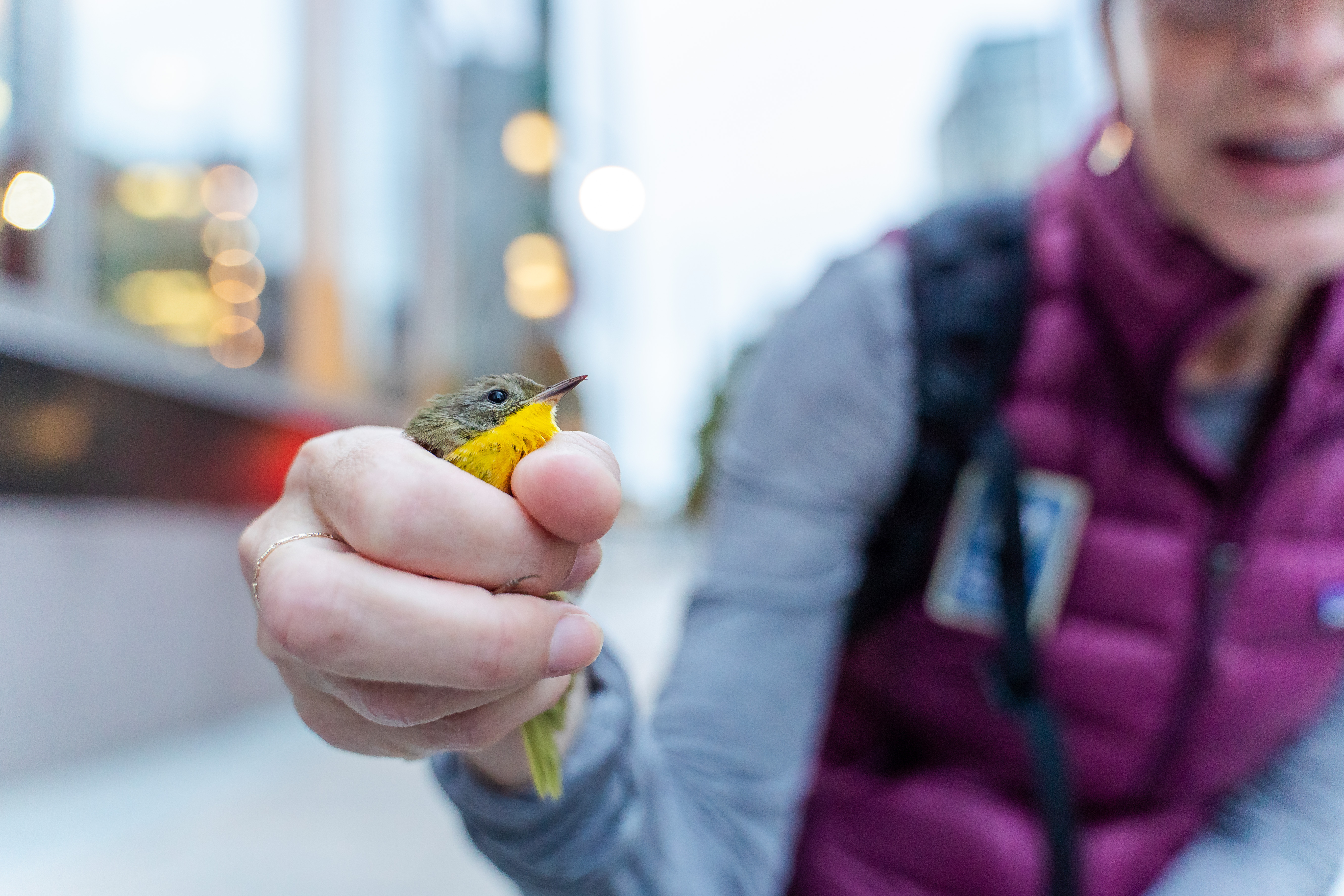
A Project Safe Flight volunteer holds a Common Yellowthroat found injured from colliding with glass. Photo: Winston Qin
CLOSED: Project Safe Flight Collision Monitoring
Did you know that up to a quarter million birds die from collisions with New York City's buildings each year as they migrate through our area in the spring and fall? Volunteers help NYC Audubon study the causes of these collisions and ways to prevent them by monitoring select street routes located throughout the five boroughs early in the morning for dead and injured birds.
Signups for spring 2024 are now closed. Please check back in August for more information on how to participate in fall 2024 or subscribe to our eGret newsletter to receive monthly email notifications about all of our volunteer opportunities.
Signups for spring 2024 are now closed. Please check back in August for more information on how to participate in fall 2024 or subscribe to our eGret newsletter to receive monthly email notifications about all of our volunteer opportunities.
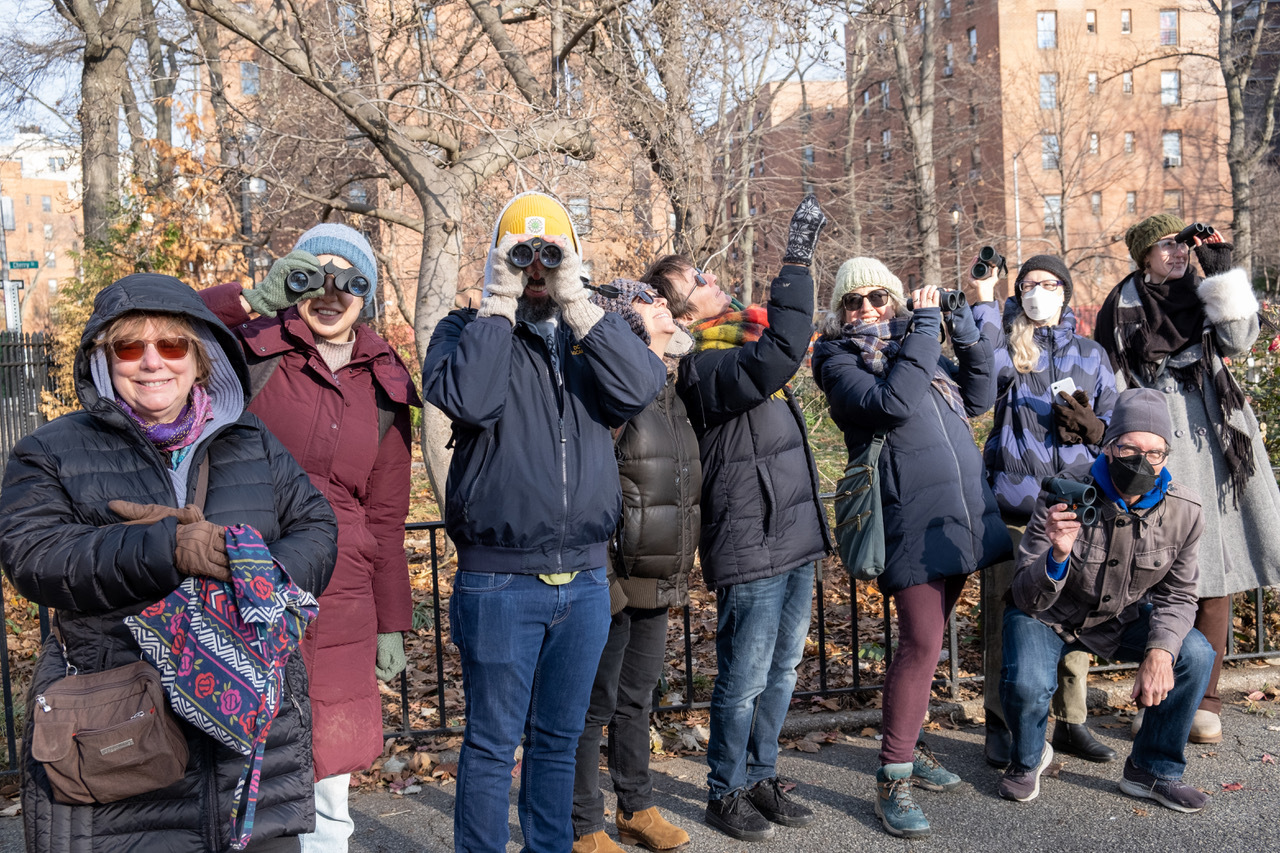
Christmas Bird Count in the Lower East Side, Manhattan (December 18, 2022). Photo: Pat Arnow
CLOSED: Christmas Bird Count 2023
The 124th annual Audubon Christmas Bird Count—the nation's longest-running Community-Science bird project—has ended for the NJ-Lower Hudson count circle (which includes all of Manhattan, Governors Island, Randall's Island, and parts of northern NJ).
The 125th Christmas Bird Count for the NJ-Lower Hudson count circle will be on Sunday, December 15, 2024. Please check back in November 2024 for more information on how to register or subscribe to our eGret newsletter to receive monthly email notifications about all of our volunteer opportunities.
The 2023 CBC results for Central Park and for the entire NJ-Lower Hudson count circle will be available here in February 2024.
The 125th Christmas Bird Count for the NJ-Lower Hudson count circle will be on Sunday, December 15, 2024. Please check back in November 2024 for more information on how to register or subscribe to our eGret newsletter to receive monthly email notifications about all of our volunteer opportunities.
The 2023 CBC results for Central Park and for the entire NJ-Lower Hudson count circle will be available here in February 2024.
